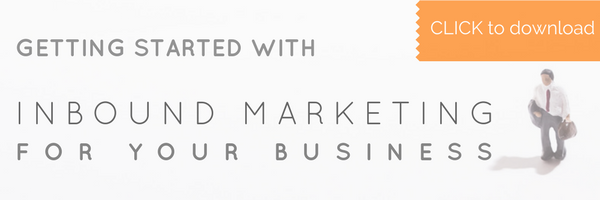When it comes to relevancy, context is EVERYTHING!
Remember when cassette tapes were cutting edge? Maybe I'm dating myself here, but I certainly do. I remember making mixed tapes for the road (or girls), and thinking how bad my parents had it growing up dealing with records and 8-track players.... and generally not being able to customize their listening experiences.
Today, cassette tapes are pretty darn worthless, aren't they? I wouldn't pay 5 cents for the same Huey Lewis and the News album that I saved up my allowance for in the 80s, let alone my entire paycheck! But that doesn't mean that everybody feels that way! There are vintage collectors out there paying top dollar for 80s memorabilia as well as analog purists who REFUSE to go digital.
And that's exactly the issue that contextual marketing addresses. It helps you find the RIGHT customers at the RIGHT time as opposed to investing in reaching EVERYBODY.
SIMILAR: What is Content Marketing? It's Art That Sells You
It's not about selling something to people they don't need... that's key.
Every year for the holidays I visit my family in Colorado. If you're familiar with the state, you know that winter is cold. It doesn't matter if you're in the Denver metro area or the mountains to the West... November - March = freezing nights, cold most days, and hot sun on the warm days with frigid shade.
Now, I grew up there, so I'm familiar with the seasonal changes, and the dry, thin air. However, I have lived in Southern California for nearly 20 years, so I am a changed man, and especially sensitive to the differences.
This year my father made some renovations to his basement, and in that, he installed heaters under the carpet. I remember thinking, "How cool is this?! I want it in my house! Wait, no... it's WAY too warm where I live for such a thing."
And just like that, we went from "I want that," to "next!"
That's what got me thinking... This great great product that I would consider to be high-end and the envy of the neighborhood in Colorado during the winter months is absolutely pointless in a place like Orange County, California. Even if you get the exact same income bracket, age, sex, education... and all of those other important demographics... they mean nothing in the wrong context.
So, how do you avoid these types of challenges when it comes to your leads and prospects? Are you still purchasing lists and blasting calls/emails out to them, hoping something sticks? If so, isn't it getting frustrating?... all of the wasted time spent on leads that never had legs to begin with... because maybe they don't have any needs, or maybe the pains your trying to address don't apply.
Whatever it is, it's happening because you're missing out on context, and that's what I'm her to help you with.
1: Switch from outbound to inbound
If you're still buying your leads off of somebody, we're already one step behind, because they have no idea you exist. So, when you start pitching your product or try to talk to them about their problems, they know you know nothing about them, which makes it hard for them to take you seriously.
Click HERE to learn more about how the inbound marketing methodology works with our free step-by-step playbook:  |
Think about the last time you picked up a call from a cold-caller, and gave them more than 10 seconds of your time. Now, trim that down to how many actually pitched something you needed... Now, trim that down do how many times you actually bought from them.
It's not a lot, is it? As a business owner, it makes NO sense for you to entertain every single call that comes your way, REGARDLESS of whether you actually need their help. We don't have time for such things considering how many of those calls are complete wastes of time.
If you instead got your leads through inbound marketing, not only do they know who you are when you call, but the messaging that got them to divulge their contact information to you was more about assessing and solving their problems than it was learning about your service offerings. So, they're more engaged to the types of challenges you exist to resolve, which helps them relate your product or service features to their own issues.
If you're going to start bringing in leads through educational content on your website, blogs, and social media, you're going to also want to update your sales process. Context depends on it.
2: Update your process
Here are the areas I would start with:
- Marketing software - It's nice to have a program that can tell you what's working, as well as organize data in a manner that is easy to digest, and deliver it to your sales teams.
- This way, they know ALL they need to know about their leads when making that first call (where they've been on your website, what articles they read, and what downloads they felt were valuable), not just basic facts that everybody has access to.
- It should also integrate well with your CRM
- It should have some other features useful to your sales team, like alerts
- Sales sequence - Inbound leads don't want to be treated like outbound leads. Hell, outbound leads don't even want to be treated like outbound leads! But the difference here is that with your outbound leads there is an expectation that you are clueless about their business or challenges outside of vague generalities... while with inbound, there is an expectation that you DO know about them, because they DIVULGED that information you. It sets a tone. Your sales sequence should be set up with that in mind:
1) Your salespeople shouldn't be shoving generic elevator pitches into that first call, but instead be more helpful
2) There is already a sense of trust, so they also don't need to lead with why your company is great
3) The conversations were never really about your company to begin with, but rather, their problems, so your calls should be more consultative
4) By the time you get to a proposal, you've uncovered their problems, set goals you can help them achieve, and filled in ALL answers to BANT (Budget, Authority, Needs, & Timing)
- Alerts - Inbound connects your sales teams to their prospects, so they can see in real-time when good leads on your site (and what page they're on, which is helpful if you have one for pricing!) or downloading something important. Their prospects are TEN TIMES more likely to pick up the phone or call back when somebody reaches out within five minutes of being on your site.
3: Customize your messaging
Your prospects all have different points of entry. Some are coming in knowing everything they need to know prior to making a decision while others are still trying to diagnose their problems.
This is the case for inbound OR outbound, but with INbound, we KNOW where they are in the process by reviewing their past behaviors, so our messaging in sales OR marketing is rooted in relevant context, which allows us to be more relevant to the situation.
CONCLUSION:
Going back and thinking about how important NICHE is, I can't help but bring context into the conversation. As I mentioned earlier, this was a game-changer for Orange Pegs because our site reflects the pains and solutions specific to individual industries, and because of that, it attracts people who are experiencing the pains we solve.
Click HERE to download the Guide to Getting Started with Inbound Lead Generation:



